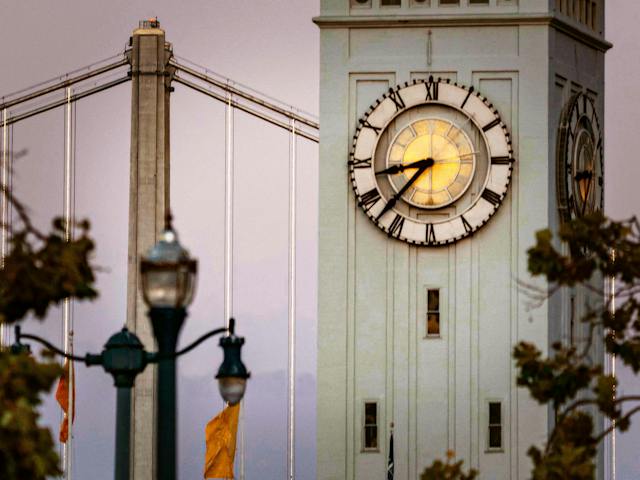
When did daylight savings time start? It started in Canada in 1908.
Daylight savings time is the practice of putting the clocks forward by one hour in the summer and back in the winter. The reason for this is to give people more sunlight throughout the year as the length of the day changes with the season. Without daylight savings time, in the summer the sun rises while people are still asleep and sets in the evening. With daylight savings time, the sun rises an hour later, still while people are asleep, but they get an extra hour of daylight in the evening after work. When the winter comes and the clocks are set back, daylight savings gives people more sunlight in the morning.
Not all countries have daylight savings time. 70 countries around the world use it and the other 125 countries don’t. It is not necessary for countries that are near to the equator because the time the sun rises and sets doesn’t change throughout the year. A lot of people also don’t think that daylight savings is necessary for other reasons.
So, why do we have daylight savings? The concept of altering the time people woke up and slept never really arose until people started living in urban environments. People involved in agriculture rose with the sun and generally slept with it. Or they rose when their animals needed tending. They didn’t have clocks because they didn’t need clocks. The idea behind daylight saving came from people living in towns who wanted to stay up late. The only way to see or work when it was dark was to use candles and candles are not cheap. The Romans had different length hours at different times of the year to compensate for this.
The situation became more noticeable after the Industrial Revolution. For the first time in history, large numbers of people moved to the cities and started working in factories where they worked shifts at certain times. They had to get up at a specific time in order to get to work at a specific time. They no longer set their day by the sun, but by the clock. And in the evenings in the summer and the mornings in the winter they needed to burn candles to be able to see.
Several people came up with the idea for daylight savings towards the end of the 19th century. A New Zealand entomologist called George Hudson suggested the idea in 1895 because he wanted to be able to catch butterflies after his shift at work finished. Daylight savings would give him an extra hour of daylight to do that. An Englishman called William Willet suggested the idea in 1907 because he played golf and he wanted to be able to play after work. His suggestion got as far as the government, but wasn’t taken up.
The first places in the world to start using daylight saving time was Port Arthur and Fort William, Ontario, in Canada. On July 1st, 1908. A business man in Port Arthur, called John Hewitson, approached the town councils of both towns to persuade them to introduce daylight savings. Whether he heard the idea somewhere or came up with it himself is anyone’s guess, but he wanted an extra hour of sun in the summer evenings after work. The towns voted on it and the motion was passed. Representatives from the councils visited factories and other places of work to explain what would happen and they made a pamphlet. On July 1st, they started. The pamphlets they produced may have been read by other countries when they were thinking about daylight savings.
The rest of the world may not have taken up daylight savings if it hadn’t been for World War 1. By the middle of the war, European countries were rapidly running out of coal and other fuel sources. Britain was being supplied by America and Canada, but Germany was in dire straits. In 1916, a proposal to start daylight saving time to cut down on the amount of fuel needed to light houses and factories was introduced. The proposal was accepted and in 1916, Germany began to use daylight saving time. Britain had similar thoughts and they introduced daylight savings shortly after. Most European countries followed suit and Russia introduced it in 1917, with America joining in in 1918.
People say that daylight saving time saves a lot of fuel, but there is no conclusive evidence. It may reduce fuel in some ways, but increase it in others. Just like most things, there are many reasons why it is a good idea and many reasons why it isn’t. As a group, farmers seem to be against daylight savings because the animals they farm live by the sun and not by the time we have decided. And this is what I learned today.
Photo by Aaron Houston: https://www.pexels.com/photo/view-of-the-ferry-building-san-francisco-6441569/
Sources
https://www.reuters.com/world/us/what-is-us-daylight-saving-time-why-was-it-created-2023-10-31/
https://en.wikipedia.org/wiki/Daylight_saving_time
https://www.independent.co.uk/life-style/why-do-clocks-change-at-2am-b2434831.html
https://www.webexhibits.org/daylightsaving/g.html
https://www.cbc.ca/news/canada/thunder-bay/daylight-saving-port-arthur-fort-william-1.5488698
https://northernontario.travel/thunder-bay/thunder-bay-connection-daylight-savings-time

[…] were also used to make machines. The ability to tell the time exactly changed the way society thought as well. People went from living by the sun to living by the clock. Huygens inventions changed […]